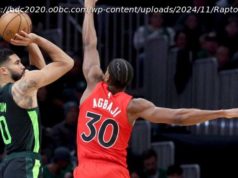A digital expert and a sales trainer answer questions pertaining to wine marketing and sales in today’s world.
Marketing and sales efforts have generally been a grind for small US wineries: to succeed requires money and expertise. The heating up of distributor consolidation over the past decade hasn’t exactly helped many small wineries get their products to consumers, but the digital revolution has facilitated an alternative: direct-to-consumer (DtC) sales.
Still, despite the seeming ease of reaching customers digitally, the principles of marketing and sales may not have changed. Several weeks ago I posed a few marketing and sales questions to two wine professionals, each with a certain perspective.
Paul Mabray (PM) is CEO at Emetry.io.
He has been stewarding the wine world in e-commerce, social media, and other digital advancements for over two decades. At Emetry, Mabray seeks better answers for the wine industry through big data.
Lynda R. Paulson (LP) is CEO at Success Strategies Inc., a 35-year-old training firm to coach winery executives and owners in public speaking and presentation, and to teach relationship sales skills to wine tasting room personnel. She is the author of “Romancing the Grape: Relationship Selling for Hospitality Professionals.”
Forbes: What is on each side of the thin line between marketing and sales?
PM: “Sales is fishing with a hook; marketing is fishing with a net.”
LP: “Marketing gets them [consumers] there and sales people’s job is to build the reputation that marketing has sold them…plus close the sale.”
Forbes: How should the marketing team interpret past sales and how should the sales team interpret what marketing says about the future?
PM: “Marketing should look at past sales as tea leaves to help create the roadmap for future sales either from analyzing and interpreting the data, or by focusing on the absence of sales/data. The sales team should use that data in exactly the same way.”
LP: “The marketing team can use past sales information to understand needs and wants…what marketing says about the future can influence expectations.”
Forbes: How best should the marketing team apply present sales data?
PM: “…they should understand the success or failure with the sales activity. As such, they use that data to target more customers that behave like past buyers…”
LP: “I haven’t a clue… I would think that they would know just what to do with the sales data.”
Forbes: By sheer force of magnitude it appears easier to apply digital methods to marketing than by telephone or even in focus groups, but is it more reliable?
PM: “Digital is not necessarily more reliable, just differently reliable…the sheer reach, multiplying factor, and feedback loop from digital far out-scales all other tools especially for the price…you need tools and professionals to properly organize and interpret the data. That being said, nothing replaces the qualitative understanding and feedback loop that human-to-human generates.”
LP: “Not necessarily is the digital information more reliable…people change and they can be influenced.”
Forbes:What can make the answers on a digital marketing survey more reliable than the answers from a focus group or by telephone?
PM: “Scale: you can reach so many more people and observe actual behaviors vs. answer/question bias. Behavioral science tells what people do vs. what they think, which is most important in understanding buying propensity.”
LP: «Out of my depth.»
Forbes: The role demographics plays in a marketing effort is clear, but people of all ages respond to a good (or poor) sales effort; can either a poor or a good sales effort defy the expectations of marketing?
PM: “Demographics rarely speaks to how people actually behave. With few exceptions (average age of having children, career progression, affluence curve, and death), they tell very few stories about how people will act. That being said, sales can defy marketing with good and bad efforts by sheer charisma or force of will.”
LP: “Absolutely! A seasoned relationship sales person can create sales from whole cloth. An inadequate sales person can ruin it no matter how good the marketing demographics say how good the potential is.”
Forbes: In a fickle wine consumer world, where fads come and go and production either lags behind or gets too far ahead, how nimble can digital information be for making quick decisions and how nimble can tracking sales be?
PM: “Digital can’t overcome the anchor of time and land associated with creating wine. That being said, it can more quickly see opportunities or challenges with making sales and be agile at refocusing efforts…”
LP: “Enthusiastic and well trained people can make the difference in the bottom line any day of the week…no matter the bouncing ups and downs of production.”
Forbes: Speaking of fickle consumers, for generations the wine world has known that approximately 95% of all wine is sold to the largest majority of wine consumers. Yet, wine promotion has always seemed to center on appealing to the 5%. This situation has a decided effect on wine pricing. How does either digital marketing or person-to-person sales address this kind of consumer market? Is there a need to “market up” or to “sell up?”
PM: “Both of these play quite well to trading up. Human-to-human gives a person the opportunity to up-sell via story telling, relationships, and enriching it via the Experience Economy. With digital, you are also giving the ability to up-sell via service and storytelling and reach across time and borders…since the cost of shipping is so significant, gratification is not instant, it lends itself to a buyer that is truly interested in making a higher end purchase.”
LP: “I did not realize that wine promotion targeted only 5% of the market. ..know your “level” and train the tasting room team to sell accordingly.”
Forbes: There are hundreds of thousands of wines in the world produced from thousands of different grape varieties, yet the U. S. market consistently ranks Cabernet Sauvignon, Chardonnay, Pinot Noir and Merlot, in that order, the top four. Is this situation an opportunity or an albatross?
PM: “Variety branding is both a sad fact of helping meet customer expectations without needing to really understand wine beyond it being a tasty beverage…this does provide an opportunity to capitalize on a niche flavor/story profile from other varieties… Depending on the situation, people are happy to step out of their comfort zone either when risk is reduced (often in small experiments, hence why “by the glass” programs are so essential) or when there is a guide (friend, sommelier, critic, etc)…every single type of product has tremendous diversity… We focus so much on trying to turn a bug (complexity, plethora of choice, changing product nature) into a feature and we too often see the solution as ‘more education.






